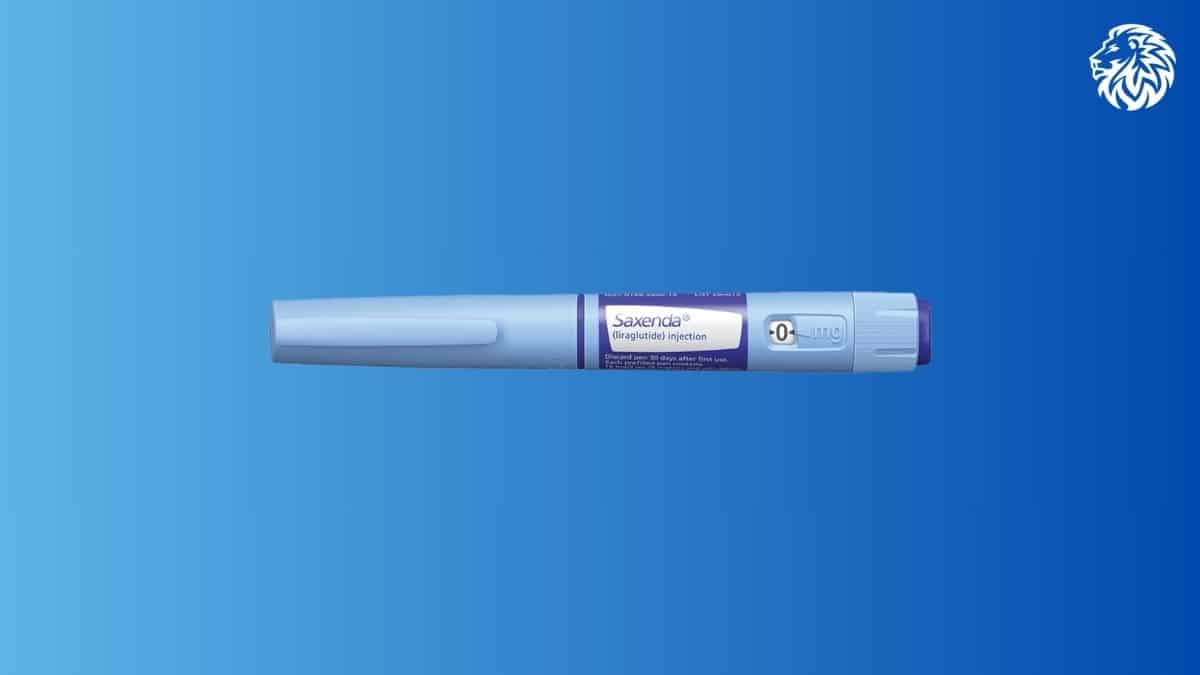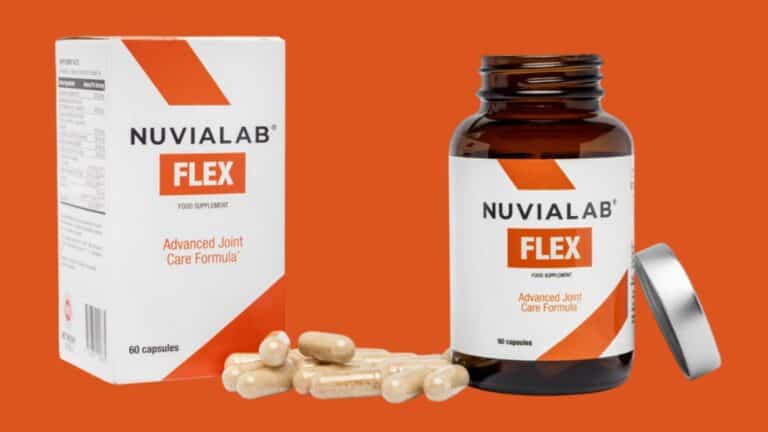In the search for effective weight management solutions, Saxenda (liraglutide) has emerged as a prominent option for both adults and certain adolescents struggling with obesity and weight-related health issues. Approved by the FDA, Saxenda functions as an adjunct to a reduced-calorie diet and increased physical activity, aiming to help individuals not only lose weight but also maintain their weight loss. This post will dive deep into how Saxenda works, its usage guidelines, potential side effects, and the factors to consider before starting this medication.
What is Saxenda?
Saxenda is a prescription medication in the form of a daily injection that helps in weight loss for individuals with a body mass index (BMI) of 30 or higher or a BMI of 27 or higher coupled with at least one weight-related health issue like hypertension, type 2 diabetes, or high cholesterol. Saxenda is not intended to treat type 1 or type 2 diabetes, although it contains the same active ingredient (liraglutide) as another diabetes medication called Victoza. Unlike Victoza, Saxenda is specifically formulated and approved for weight management.
How Does Saxenda Work?
Saxenda works by mimicking a hormone in the body called glucagon-like peptide-1 (GLP-1), which regulates hunger. By activating GLP-1 receptors in the brain, Saxenda reduces appetite and slows gastric emptying, helping individuals feel full longer and reducing calorie intake. This dual action can lead to weight loss when Saxenda is paired with a healthy diet and regular exercise. Additionally, Saxenda may enhance insulin secretion and reduce glucagon secretion, contributing to lower blood sugar levels, which can be beneficial for individuals with insulin resistance or pre-diabetes conditions.
Who Can Use Saxenda?
Saxenda is approved for:
- Adults with obesity (BMI of 30 or greater).
- Overweight adults (BMI of 27 or greater) who have weight-related health conditions such as high blood pressure, type 2 diabetes, or high cholesterol.
- Adolescents aged 12 to 17 who are overweight with a body weight above 60 kg (132 lbs) and whose BMI corresponds to obesity criteria for adults.
It’s important to note that Saxenda has not been studied extensively in individuals under 12 years old or in adolescents with type 2 diabetes, so its efficacy and safety in these groups remain uncertain.
Dosage and Administration
Saxenda is administered as a subcutaneous injection once daily, usually in the thigh, abdomen, or upper arm. To minimize potential side effects, the dosage is gradually increased over five weeks:
- Week 1: 0.6 mg once daily
- Week 2: 1.2 mg once daily
- Week 3: 1.8 mg once daily
- Week 4: 2.4 mg once daily
- Week 5 and Maintenance Dose: 3 mg once daily
If the full maintenance dose of 3 mg is not tolerated, discontinuing Saxenda is generally recommended. After 16 weeks of treatment, if an adult has not lost at least 4% of their initial body weight, further weight loss is unlikely, and discontinuing the treatment may be advised.
Important Considerations Before Using Saxenda
Before beginning Saxenda, it’s crucial to inform your healthcare provider about your medical history, especially if you have:
- A personal or family history of medullary thyroid carcinoma or multiple endocrine neoplasia syndrome type 2 (a condition involving gland tumors).
- Diabetic ketoacidosis or if you use insulin.
- Kidney or liver disease, stomach problems, or any history of depression or suicidal thoughts.
Additionally, Saxenda is not recommended for pregnant or breastfeeding women due to a lack of sufficient research on its effects during these conditions. Also, sharing injection pens is strictly discouraged due to the risk of infection.
Potential Side Effects of Saxenda
Like any medication, Saxenda has potential side effects. While some users may experience mild reactions, others might encounter severe issues that require immediate medical attention.
Common Side Effects
- Nausea (often as users begin treatment)
- Vomiting, diarrhea, or constipation
- Increased heart rate
- Headache or dizziness
- Fatigue
These side effects are often temporary as the body adjusts to the medication. However, users should report prolonged or severe symptoms to their healthcare provider.
Severe Side Effects
- Thyroid tumors: In animal studies, liraglutide has been linked to thyroid tumors. Signs of a thyroid issue include neck swelling, trouble swallowing, hoarseness, and difficulty breathing.
- Pancreatitis: Symptoms of pancreatitis include severe upper stomach pain that may radiate to the back, nausea, vomiting, and rapid heart rate.
- Gallbladder problems: Pain in the upper abdomen, jaundice, or clay-colored stools could signal a gallbladder issue.
- Low blood sugar: Especially if combined with other diabetes medications, Saxenda can cause hypoglycemia (low blood sugar), leading to weakness, confusion, sweating, and even fainting.
- Kidney problems: Reduced urination, swelling in the limbs, or shortness of breath are potential warning signs.
Drug Interactions and Safety
Saxenda can affect the body’s ability to process other medications by slowing digestion. It’s essential to discuss all medications, including over-the-counter drugs and supplements, with your doctor before starting Saxenda. Specifically, Saxenda should not be used with other GLP-1 receptor agonists or weight-loss medications, as the safety of these combinations has not been established.
Tips for Successful Weight Loss with Saxenda
To maximize the effectiveness of Saxenda, it’s essential to follow a healthy lifestyle and stay mindful of your body’s signals. Here are some tips to help make your Saxenda journey successful:
- Follow a Reduced-Calorie Diet: Combining Saxenda with a nutritious, reduced-calorie diet enhances weight loss and helps manage any potential digestive side effects.
- Incorporate Physical Activity: Aim for a mix of aerobic exercises and strength training, and gradually increase the intensity based on your comfort and fitness level.
- Track Your Progress: Regularly monitor your weight and consult your healthcare provider for follow-up appointments. After 16 weeks, assess if Saxenda is helping you achieve your goals.
- Stay Hydrated and Practice Good Injection Habits: Staying hydrated can alleviate some side effects like headaches or nausea. Also, follow injection instructions closely, rotating the injection sites and properly disposing of needles.
Related: Wegovy, Zepbound, Ozempic, Mounjaro
Conclusion
Saxenda offers an innovative solution for those struggling with obesity and weight-related health concerns. By promoting feelings of fullness and reducing appetite, it supports individuals in their weight loss journey. However, Saxenda is not a standalone solution. It should be complemented by a well-rounded lifestyle that includes a nutritious diet, physical activity, and regular medical consultations to monitor progress and adjust the dosage as needed.
For those considering Saxenda, an open discussion with a healthcare provider is crucial to evaluate personal health needs, potential risks, and the likelihood of success with this medication. With proper support and a proactive approach, Saxenda may provide the boost needed to achieve and maintain a healthier weight and improve overall well-being.
Frequently Asked Questions about Saxenda
How long does a Saxenda pen last?
Each Saxenda pen lasts about 30 days if stored correctly, either refrigerated or at room temperature after the first use. Check with your pharmacist on storage specifics.
When should I expect to see weight loss results?
Weight loss results vary, but many users see some initial results within 2 to 4 weeks. After 16 weeks, if there’s no significant weight loss, consult your doctor about continuing the treatment.
Are there any dietary restrictions while using Saxenda?
There are no strict dietary restrictions. However, sticking to a low-calorie, balanced diet is highly recommended for optimal results. If nausea occurs, try consuming bland, low-fat foods.
Can I drink alcohol while on Saxenda?
While there is no direct restriction against alcohol, it’s advisable to be cautious. Alcohol can affect blood sugar levels, which could interact with Saxenda’s mechanisms. Additionally, it may counteract weight-loss efforts.
How long does it take for Saxenda to show results?
Many users begin seeing weight loss within the first 2 to 4 weeks. After 16 weeks, if at least 4% of body weight hasn’t been lost, consult your doctor about continuing.
What should I do if I miss a dose?
Take the missed dose as soon as you remember but skip it if it’s close to your next dose. Do not double up. If you miss doses for more than three days, consult your healthcare provider on restarting.
Are there any foods or drinks I should avoid while on Saxenda?
While no specific foods are restricted, maintaining a reduced-calorie diet is crucial. If experiencing nausea, bland, low-fat foods may help. Be cautious with alcohol, as it may affect blood sugar.
Can Saxenda be used with other weight loss medications?
No, Saxenda should not be used with other GLP-1 receptor agonists or weight loss medications due to potential risks and lack of safety data.
How should Saxenda be stored?
Unopened pens should be refrigerated but not frozen. After opening, they can be stored in the fridge or at room temperature for up to 30 days.
What are the common side effects of Saxenda?
Common side effects include nausea, vomiting, diarrhea, headache, and fatigue. These often decrease over time, but consult a doctor if they persist.
How is Saxenda different from Victoza?
Although both contain liraglutide, Saxenda is formulated specifically for weight management, while Victoza is approved for type 2 diabetes management.
Who should avoid using Saxenda?
People with a personal or family history of medullary thyroid cancer, multiple endocrine neoplasia syndrome type 2, or pregnant or breastfeeding women should avoid Saxenda. Always consult a doctor to evaluate health conditions that may affect safety.
Can I reuse the needles for Saxenda injections?
No, needles should be used only once to avoid infection or injury. Dispose of them properly in a sharps container after each use.
Will I need to continue Saxenda indefinitely to maintain weight loss?
Long-term weight maintenance may require ongoing treatment, but this should be discussed with your doctor based on your progress, health, and individual goals.
References
- U.S. Food and Drug Administration. (2020). Saxenda (liraglutide) injection label. Retrieved from https://www.accessdata.fda.gov/drugsatfda_docs/label/2020/206321s012s013s014lbl.pdf
- Pi-Sunyer, X., Astrup, A., Fujioka, K., Greenway, F., Halpern, A., Krempf, M., … & Skovgaard, D. (2015). A randomized, controlled trial of 3.0 mg of liraglutide in weight management. New England Journal of Medicine, 373(1), 11-22. https://doi.org/10.1056/NEJMoa1411892
- Novo Nordisk. (n.d.). Saxenda®: For adults with obesity. Retrieved November 3, 2024, from https://www.saxenda.com/
- European Medicines Agency. (2023). Saxenda: European public assessment report. Retrieved from https://www.ema.europa.eu/en/medicines/human/EPAR/saxenda
- WebMD. (n.d.). Saxenda (liraglutide) – subcutaneous: Uses, dosage, side effects. Retrieved November 3, 2024, from https://www.webmd.com/drugs/2/drug-168195/saxenda-subcutaneous/details
- Cleveland Clinic. (n.d.). Liraglutide injection for weight management. Retrieved November 3, 2024, from https://my.clevelandclinic.org/health/drugs/18595-liraglutide-injection-weight-management







